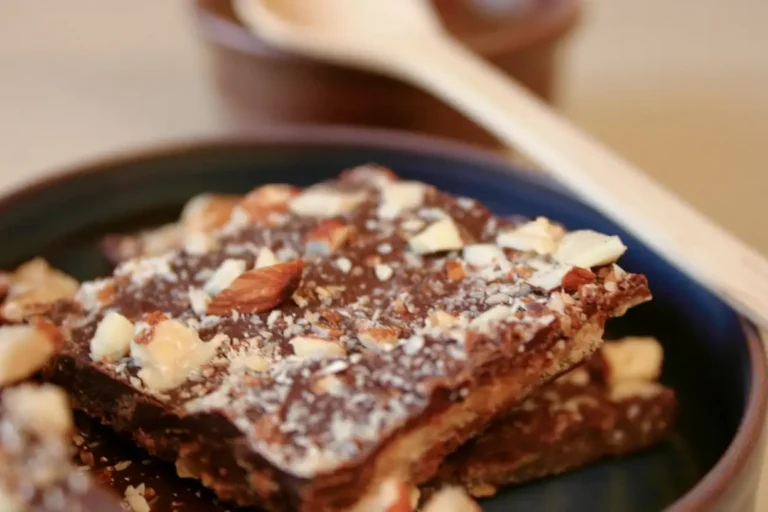“`html
That Fancy Seared Tuna? You Can Make It in 10 Minutes.
Let’s be real for a second. That perfect tuna steak you get at a restaurant—the one with the crispy-charred outside and that cool, ruby-red center? You probably think it’s some kind of kitchen wizardry.
Well, I’m here to pull back the curtain. It’s not magic. It’s actually one of the simplest, fastest, and most satisfying things you can ever cook. No joke.
It all comes down to one thing: a screaming hot pan and a fish that doesn’t see it coming. Forget takeout. Tonight, you’re the rockstar chef.
The Lineup: What You Need
The whole point here is to let the tuna shine. Everything else is just the backup singers, so get the good stuff.
- Ahi Tuna Steaks: Grab two, about 6-8 ounces each. Make sure they’re thick, at least 1.5 inches. That thickness is your ticket to a rare center.
- The “Good” Stuff: Ask your fish guy for “sushi-grade” or “sashimi-grade.” It should be a deep, vibrant red. If it looks sad and brownish, walk away.
- High-Heat Oil: You need about 2 tablespoons of something that won’t smoke you out of your kitchen. Think avocado, grapeseed, or canola oil.
- Sesame Seeds: A quarter cup. I dig a mix of black and white seeds; it just looks cooler.
- The Sauce Crew: Low-sodium soy sauce (or tamari), a little fresh grated ginger and garlic, a drop of honey or maple syrup, and some toasted sesame oil for that nutty aroma.
- Finishing Touches: A squeeze of fresh lime, plus salt and freshly cracked black pepper. Don’t skimp on the pepper.
Your Kitchen Toolkit
No fancy gadgets required. Just the basics, but the right basics.
| Tool | Why It’s Key |
|---|---|
| Heavy Skillet | Cast iron is king. |
| Tongs | For flipping, not stabbing. |
| A Sharp Knife | Non-negotiable. Seriously. |
| Shallow Dish | For the sesame seed crust. |
The Game Plan: Making It Happen
This whole thing moves at lightning speed. Get everything laid out *before* you turn on the stove. This is called ‘mise en place,’ and it’s the secret to not panicking.
Step 1: Take the tuna out and pat it completely dry with paper towels. I mean desert-dry. Moisture is the enemy of a crispy sear. Then hit both sides with salt and pepper.
Step 2: Whisk up the sauce. In a small bowl, mix the soy sauce, ginger, garlic, honey, and that toasted sesame oil.
Step 3: Give the tuna a quick flavor bath. Brush about half the sauce on the steaks. Let them hang out for maybe 5 minutes. Any longer and you’ll start to “cook” the fish.
Step 4: Time for the crust. Spread the sesame seeds on a plate. Press each side of the tuna steaks into the seeds until they’re totally coated.
Step 5: Get that skillet HOT. Put it over high heat and let it rip for a few minutes. You want it so hot that a drop of water vanishes on contact.
Step 6: Add the oil. It should shimmer instantly. Gently lay a tuna steak in the pan. Listen for that aggressive sizzle—that’s the sound of victory. Now, hands off. Let it sear for 60-90 seconds.
Step 7: Flip it with your tongs and give the other side the same 60-90 seconds. If your steak is super thick, you can even sear the edges for 15 seconds each.
| Desired Doneness | Sear Time Per Side |
|---|---|
| Rare (Cool Red Center) | 60-90 Seconds |
| Medium-Rare | 2 Minutes |
| Medium | 3 Minutes |
Step 8: Get it out of the pan immediately. Let it rest on a cutting board for a couple of minutes. This is crucial.
Step 9: Use that razor-sharp knife to slice the tuna against the grain into ½-inch pieces. Drizzle with the leftover sauce, squeeze some lime over it, and take a bow.
A Few Tricks I’ve Learned
I’ve made my share of mistakes so you don’t have to. Here’s the inside scoop.
- Cold Fish, Hot Pan: This is the mantra. Keep the tuna in the fridge until the last second. A cold fish helps keep the inside rare while the outside gets that crust.
- Don’t Drown It: A quick dip in the marinade is all you need. Letting it soak for too long ruins the delicate texture of the fish.
- Give It Space: Cook one steak at a time unless your pan is massive. Overcrowding drops the heat, and you’ll end up steaming your tuna instead of searing it. Sad.
Mix It Up: Riffs & Swaps
Once you get the hang of it, you can mess with the formula.
| Instead of This… | Try This… |
|---|---|
| Sesame Seeds | Crushed Wasabi Peas |
| Honey/Maple | A pinch of Sriracha |
| Soy Sauce | Coconut Aminos (Paleo) |
Serving & Storing
Tuna is best right out of the pan, but leftovers don’t have to be a tragedy.
Toss it on some jasmine rice or next to a crisp salad. If you have leftovers, store them in an airtight container for a day or two. Don’t reheat it—just flake the cold tuna into a salad or a sandwich. Trust me.
Your Questions, Answered
Q1. Is frozen tuna okay, or is that a culinary crime?
Ans: Not a crime at all! Go for it. The trick is *how* you thaw it. Slow and steady in the fridge overnight. Never, ever the microwave unless you want to pre-cook it into rubber.
Q2. What does “sushi-grade” even mean?
Ans: Honestly, it’s mostly a marketing term. It’s the fishmonger’s way of saying, “This is my best stuff, safe to eat rare.” Just buy from a place you trust.
Q3. I’m nervous about rare fish. Can I cook it all the way through?
Ans: You *can*, but Ahi tuna gets tough and dry when it’s well-done. If you must, aim for medium by cooking it for 3-4 minutes per side, but don’t say I didn’t warn you.
Q4. Help! My sesame seeds burned. What did I do wrong?
Ans: Two likely culprits: your pan was too hot for too long, or you had too much sugar in the marinade. This is a quick sear, not a long bake.
So, There You Have It
See? Not so scary. You just made something that looks and tastes like a million bucks in less time than it takes to decide what to watch on Netflix.
That contrast between the warm, crunchy crust and the cool, silky tuna is something special. Now go on, give it a shot. You got this.
“`






